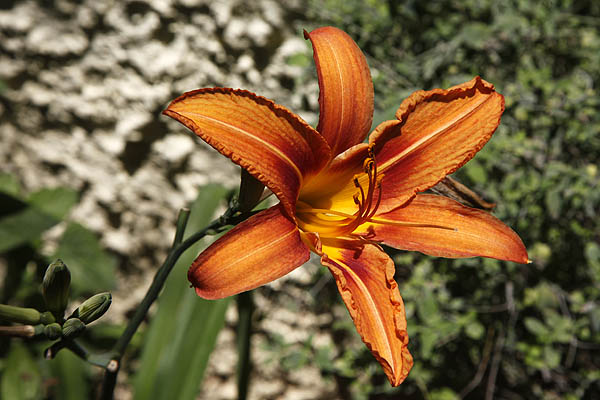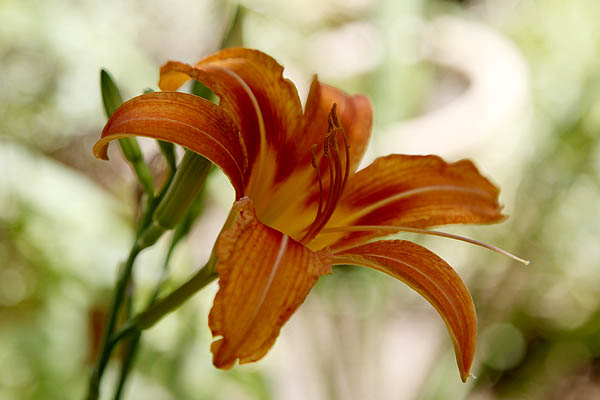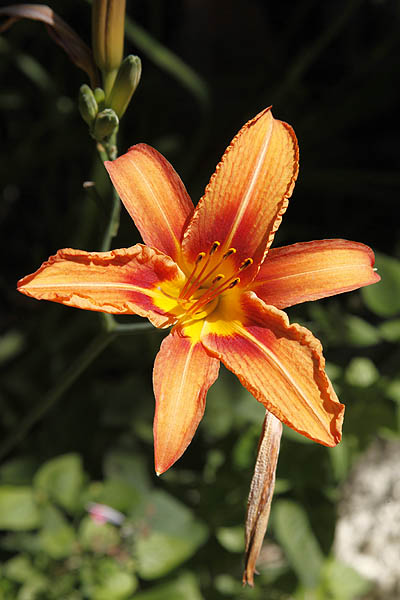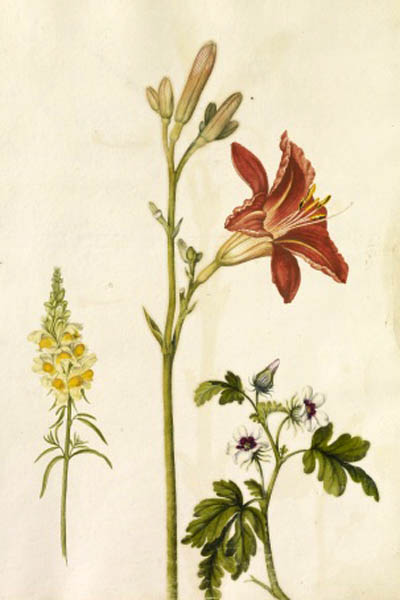Tiger Daylily, Ditch Lily, המרוקליס כתום
| Scientific name: | Hemerocallis fulva (L.) L. | |
| Synonym name: | Hemerocallis lilioasphodelus var. fulva | |
| Common name: | Orange Daylily, Tawny Daylily, Tiger Daylily, Ditch Lily | |
| Hebrew name: | המרוקליס כתום | |
| Family: | Xanthorrhoeaceae,subfamily Hemerocallidaceae, משפ'השושניים |

|
| Life form: | Herbaceous perennial, tuberous roots | |
| Stems: | 40–150 cm tall | |
| Leaves: | Linear, 50-90 cm long | |
| Inflorescence: | spikes of 10-20, each flower lasts only one day, opening in the morning and closing in the evening | |
| Flowers: | 5–12 cm across, 6 orange-red petals, with a pale central line; filaments 4--5 cm; anthers purplish black, 7--8 mm | |
| Fruits / pods: | three-valved ellipsoid capsule 2–2.5 cm long and 1.2–1.5 cm broad which splits open at maturity to release the seeds | |
| Flowering Period: | Early summer to late autumn | |
| Habitat: | Forests, thickets, grasslands and stream-sides. | |
| Chorotype: | Asia, from the Caucasus mountains and southeast Russia to the Himalaya and India, China, Taiwan, Japan and Korea |

Derivation of the botanical name: Hemerocallis, Greek hemera, day; kallos, beauty. fulva, tawny-orange.
John Gerard (1545 – 1611/12), Gerard's Herbal: ‘These lilies do grow in my garden, as also in the gardens of Herbarists, and lovers of fine and rare plants; but not wild in England as in other countries.’ The artist Alexander Marshal (c. 1620-1682), a friend of the great gardener John Tradescant the Younger, produced an accurate painting of the ‘The day lillie’, a page of three flowering plants including: a Day Lilly, a yellow Toadflax and a sprig of Malva horaria (or Time-keeping Mallow). John Parkinson (1567 - 1650), an English herbalist, botanist and apothecary to James I , in his book Paradisus in Sole (1629), described the species as ‘These flowers are almost as large as the flowers of the white Lilly, and made after the same fashion, but of a faire gold red, or Orange tawny colour.’ 

Alexander Marshal (c. 1620-1682), a page of three flowering plants including: a Day Lilly, a yellow Toadflax and a sprig of Malva horaria (or Time-keeping Mallow), Royal Collection © Her Majesty Queen Elizabeth II |